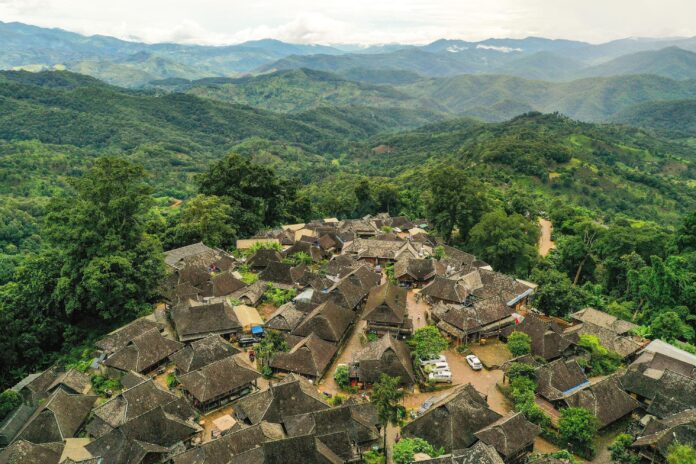The World Heritage Committee, an apparatus of the United Nations (UN), has moved to protect ancient or unique sites in countries including Iran, China, Ethiopia, Azerbaijan and the Palestinian territory of the West Bank.
The committee, which is made up of representatives from 21 member states and is part of the UN’s Educational, Scientific and Cultural Organization (Unesco), is currently meeting in Riyadh, Saudi Arabia for its 45th session. Representatives agreed on Sunday 17 September to inscribe 13 new sites on the list and approve the extension of two existing ones. The session has been underway since 10 September.
The Tell es-Sultan archaeological site, situated near the Palestinian city of Jericho, in the Israeli-occupied West Bank, was the most politicised site to be included on the list. The site contains evidence of prehistoric communities dating back to the ninth millennium BC.
Tell es-Sultan joins three other Unesco-protected sites in the region; the Church of the Nativity and the pilgrimage route in Bethlehem, the cultural landscape of southern Jerusalem and Battir, and the Old City in Hebron. Unesco accepted Palestine as a member state in 2011.
Israel, who quit Unesco in 2019 but sent a delegate to Riyadh for the meeting, released a statement on Sunday, ran by the Jerusalem Post, describing the inclusion of Tell es-Sultan as “another sign of [Unesco’s] cynical use the Palestinians.”
Also on the list is the cultural landscape of the Old Tea Forests of Jingmai Mountain near Pu’er city in China’s Yunnan Province, close to China’s border with Myanmar. It is the Unesco site to be protected that relates to tea culture, with local indigenous groups thought to have harvested wild tea trees as far back as the Han Dynasty (206BC-AD220).
The committee also included 54 historical Iranian caravanserais, located in 24 provinces across the country, which lies across the Persian Gulf from Saudi Arabia. Caravanserais are a form of historical hotel—a roadside places of shelter for travelling pilgrims or tradespeople—and line the network of trade routes linking Asia with Africa and Europe, most notably the Silk Road.
In Europe, a group of medieval Jewish sites in the eastern German city of Erfurt were listed World Heritage Site. Erfurt’s Old Synagogue, a 13th-century stone building that illustrates Jewish family life in the medieval era, was one of the buildings listed by the committee.
Last week, the committee also moved to recognise Ukrainian sites as being in danger. The Saint Sophia Cathedral and the Kyiv-Pechersk Lavra monastery complex in Kyiv, as well as the entire historic centre of the city of Lviv are the latest Ukrainian additions to Unesco’s list of endangered World Heritage sites. The decision to include the Ukrainian structures was made “due to the threat of destruction the Russian offensive poses,” according to a statement from UNESCO.
The Paris-based UNESCO began the World Heritage List in 1978 and has since listed for protection over 1,000 sites in the 45th occasions the committee has met. Notably sites include the Acropolis in Athens, Greece, to the Great Wall of China.
But the outcome of the 45th session of the committee was also notable for the places it chose not to protect. The city of Venice, who’s future is evermore imperilled by climate change, was not voted to be included. Venice was not voted in despite the recommendation of the World Heritage Centre (WHC), the convention’s permanent secretariat, that Venice be added to its list of endangered sites.
The full list of newly protected sites are as follows:
- Latvia – Old town of Kuldīga
- Germany – Jewish-Medieval Heritage of Erfurt
- Denmark – Viking-Age Ring Fortresses
- Canada – Tr’ondëk-Klondike
- Iran (Islamic Republic of) – The Persian Caravanserai
- India – Santiniketan
- China – Cultural Landscape of Old Tea Forests of the Jingmai Mountain in Pu’er
- Republic of Korea – Gaya Tumuli
- Mongolia – Deer Stone Monuments and Related Sites of Bronze Age
- Cambodia – Koh Ker: Archaeological Site of Ancient Lingapura or Chok Gargyar
- Benin, Togo – Koutammakou, the Land of the Batammariba [extension of “Koutammakou, the Land of the Batammariba”, Togo, inscribed in 2004]
- Ethiopia – The Gedeo Cultural Landscape
- Azerbaijan, Iran (Islamic Republic of) – Hyrcanian Forests [extension of “Hyrcanian Forests”, Iran (Islamic Republic of), inscribed in 2019]
- Tajikistan, Turkmenistan, Uzbekistan – Silk Roads: Zarafshan-Karakum Corridor
- Palestine – Ancient Jericho/Tell es-Sultan

























